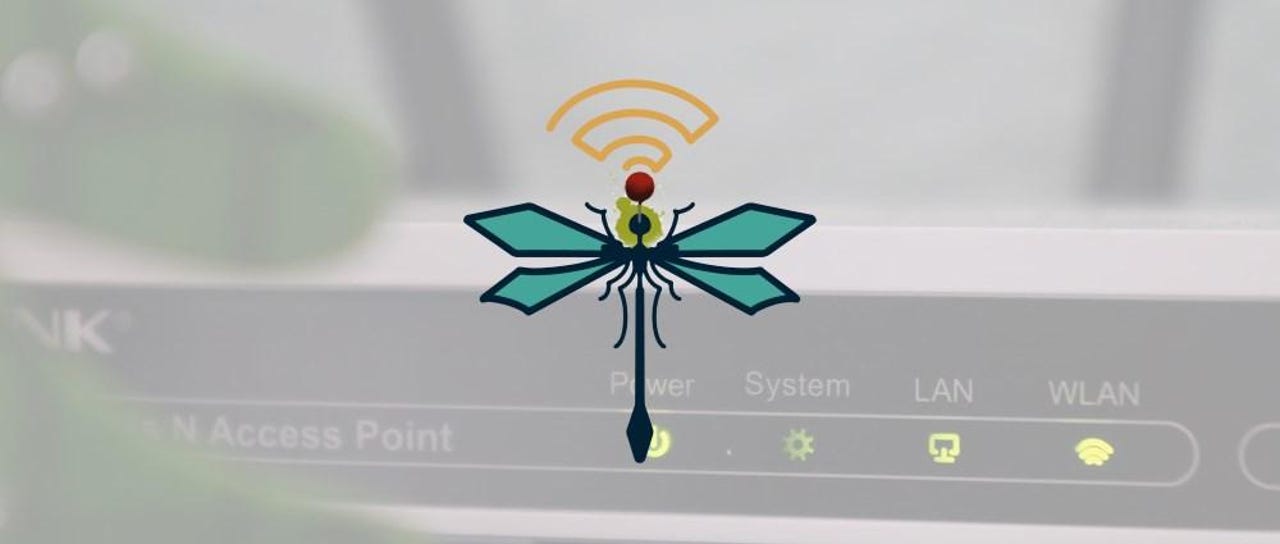Dragonblood vulnerabilities disclosed in WiFi WPA3 standard

Security
Two security researchers disclosed details today about a group of vulnerabilities collectively referred to as Dragonblood that impact the WiFi Alliance's recently launched WPA3 Wi-Fi security and authentication standard.
If ever exploited, the vulnerabilities would allow an attacker within the range of a victim's network to recover the Wi-Fi password and infiltrate the target's network.
The Dragonblood vulnerabilities
In total, five vulnerabilities are part of the Dragonblood ensemble --a denial of service attack, two downgrade attacks, and two side-channel information leaks.
While the denial of service attack is somewhat unimportant as it only leads to crashing WPA3-compatible access points, the other four are the ones that can be used to recover user passwords.
Both the two downgrade attacks and two side-channel leaks exploit design flaws in the WPA3 standard's Dragonfly key exchange --the mechanism through which clients authenticate on a WPA3 router or access point.
In a downgrade attack, WiFi WPA3-capable networks can be coerced in using an older and more insecure password exchange systems, which can allow attackers to retrieve the network passwords using older flaws.
In a side-channel information leak attack, WiFi WPA3-capable networks can trick devices into using weaker algorithms that leak small ammounts of information about the network password. With repeated attacks, the full password can eventually be recovered.
Downgrade to Dictionary Attack - works on networks where both WPA3 and WPA2 are supported at the same time via WPA3's "transition mode." This attack has been confirmed on a recently released Samsung Galaxy S10 device. Explainer below:
If a client and AP both support WPA2 and WPA3, an adversary can set up a rogue AP that only supports WPA2. This causes the client (i.e. victim) to connect using WPA2's 4-way handshake. Although the client detects the downgrade-to-WPA2 during the 4-way handshake, this is too late. The 4-way handshake messages that were exchanged before the downgrade was detected, provide enough information to launch an offline dictionary attack.
Group Downgrade Attack - works when WPA3 is configured to work with multiple groups of cryptographic algorithms, instead of just one. Basic downgrade attack. Explainer below:
For example, say a client supports the elliptic curves P-521 and P-256, and prefers to use them in that order. In that case, even thoug the AP also supports the P-521 curve, an adversary can force the client and AP into using the weaker P-256 curve. This can be accomplished by jamming the messages of the Dragonfly handshake, and forging a message that indicates certain curves are not supported.
Cache-Based Side-Channel Attack (CVE-2019-9494) - exploits the Dragonfly's protocol's "hunting and pecking" algorithm. High-level explainer below.
If an adversary can determine which branch of the if-then-else branch was taken, they can learn whether the password element was found in a specific iteration of this algorithm. In practice we found that, if an adversary can run unprivileged code on the victim machine, we were able to use cache-based attacks to determine which branch was taken in the first iteration of the password generation algorithm. This information can be abused to perform a password partitioning attack (this is similar to an offline dictionary attack).
Timing-Based Side-Channel Attack (CVE-2019-9494) - exploits WPA3's "multiplicative groups" feature. Explainer below:
When the Dragonfly handshake uses certain multiplicative groups, the password encoding algorithm uses a variable number of iteratins to encode the password. The precise number of iterations depends on the password being used, and the MAC address of the AP and client. An adversary can perform a remote timing attack against the password encoding algorithm, to determine how many iterations were needed to encode the password. The recovered information can be abused to perform a password partitioning attack, which is similar to an offline dictionary attack.
More detailed explanations for each of these vulnerabilities are available in an academic paper authored by Mathy Vanhoef and Eyal Ronen, titled "Dragonblood: A Security Analysis of WPA3's SAE Handshake" --or this website dedicated to the Dragonblood vulnerabilities.
Dargonblood also impacts EAP-pwd
Besides WPA3, researchers said the Dragonblood vulnerabilities also impact the EAP-pwd (Extensible Authentication Protocol) that is supported in the previous WPA and WPA2 WiFi authentication standards.
"We [...] discovered serious bugs in most products that implement EAP-pwd," the research duo said. "These allow an adversary to impersonate any user, and thereby access the Wi-Fi network, without knowing the user's password."
The two researchers didn't publish details how the Dragonblood vulnerabilities impact EAP-pwd because the patching process is still in progress. They did, however, publish tools that can be used to discover if WPA3-capable devices are vulnerbale to any of the major Dragonblood flaws.
Fixes for WPA3 are available
On the other hand, the WiFi Alliance announced today a security update for the WPA3 standard following Vanhoef and Ronen's public disclosure of the Dragonblood flaws.
"These issues can all be mitigated through software updates without any impact on devices' ability to work well together," the WiFi Alliance said today in a press release. Vendors of WiFi products will now have to integrate these changes into their products via firmware updates.
Vanhoef is the same security researcher who in the fall of 2017 disclosed the KRACK attack on the WiFi WPA2 standard, which was the main reason the WiFi Alliance developed WPA3 in the first place.
Fitbit Aria 2 WiFi smart scale: in pictures
More vulnerability reports:
- Researcher prints 'PWNED!' on hundreds of GPS watches' maps due to unfixed API
- Tens of thousands of cars were left exposed to thieves due to a hardcoded password
- Adobe patch update squashes critical code execution bugs
- Backdoor code found in popular Bootstrap-Sass Ruby library
- Microsoft's April Patch Tuesday comes with fixes for two Windows zero-days
- Intel finally issues Spoiler attack alert
- KRACK attack: Here's how companies are responding CNET
- Top 10 app vulnerabilities: Unpatched plugins and extensions dominate TechRepublic
